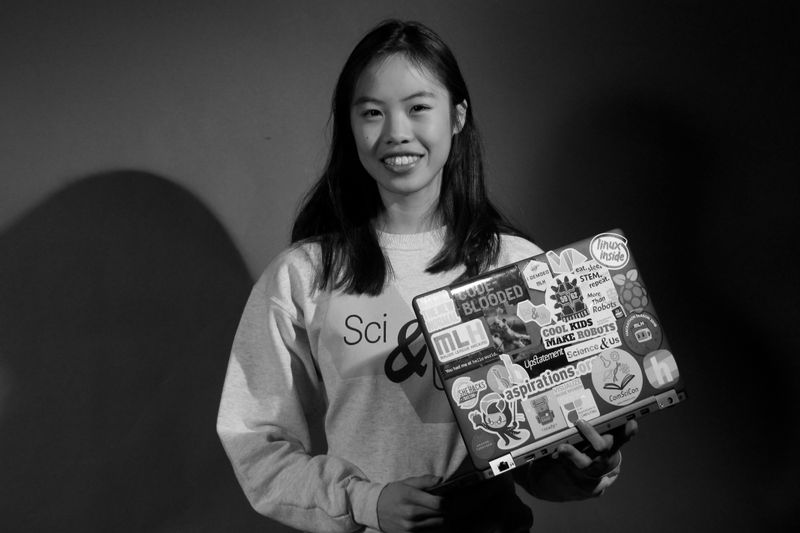We Are America
Select One?
By Katherine

Lowell High School, Lowell, Massachusetts
I was at church for a youth program when the pastor walked by. Dressed in a tidy blac suit, he smiled warmly and asked 11-year-old me, “Are you a math and science person, or humanities person?” I didn’t know how to answer. Though the question was merely intended as small talk, it has stuck with me. Could I be both? Neither?
I’ve always been able to find something interesting and exciting in anything. In fifth grade, while watching a Percy Jackson movie, I thought Apollo, Greek god of the sun, was pretty cute. I Googled the actor’s name and ended up on a (totally PG) video montage of Greek male models. What captured my attention wasn’t their physiques — it was the steady beat and eerie tone of the Greek song in the background. I wanted to understand it. Looking up a translation didn’t feel like enough — the lyrics became a puzzle I was determined to solve.
I spent the next three years deciphering Greek news articles, listening to Greek pop and rap, and chatting with native speakers online. Studying a language seemed to check the humanities box. But I had also been learning other languages, ones in the realm of technology and science. When I was 11, I wanted to customize my Tumblr blog, so I combed through thousands of lines of HTML, CSS, and Javascript code until I could build my own.
During high school, I learned Java, Python, and R independently. How could I decide which category of people I belonged to? I’d been wondering if we need to choose only one. Today’s most pressing issues, from pollution to cybersecurity, all involve STEM (science, technology, engineering, math), but also matter to people outside of those fields. Understanding STEM is crucial, but not everyone needs — or wants — to be a scientist. “Science communication” explains complex topics in engaging, accessible ways, and it ties together STEM with humanities and social sciences.
Last year, at 17, I started Science & Us, an organization to help make science more accessible. I figured: Let’s start with an event where high schoolers like me can create projects that translate science topics to the public, and meet people in fields like science journalism, science policy, and more.
In 2018, our team of six high school students from across the state held two events and took part in two national science communication conferences. Our event participants record podcasts write articles and create animations that explain concepts in digestible, interesting ways.
In December 2018, an attendee admitted that she didn’t want to be there — her teacher had advertised an event about science, not science communication. Just a few hours later, she sculpted her Play-Doh representations of electrons, which she then featured in her stop-motion animation about alloys. Another attendee, now my youngest co-organizer, realized that although drawing is her favorite hobby, there are many interdisciplinary careers open to her, from illustrating scientific magazines to directing nature documentaries.
For years, I had been seeking an outlet for my own interest in science writing. I didn’t find one for people my age, so I made one. Now, when I think back to that question the pastor asked me, I realize the implied instructions have changed from “select one” to “mark all that apply."
© Katherine. All rights reserved. If you are interested in quoting this story, contact the national team and we can put you in touch with the author’s teacher.
- Education
Tags: